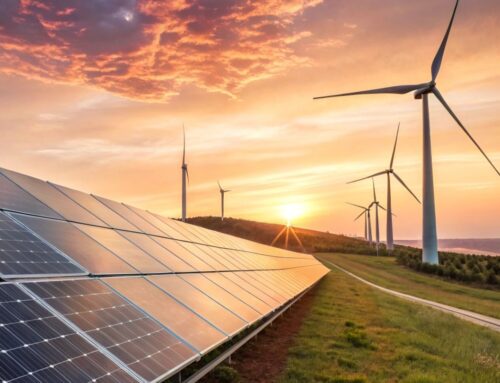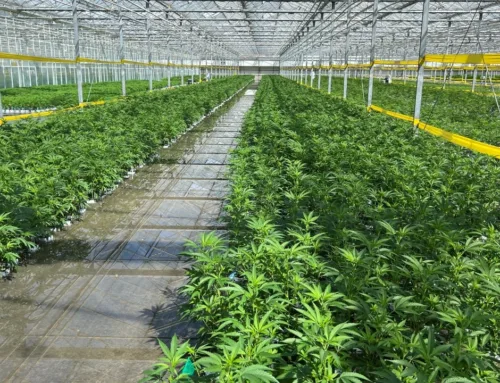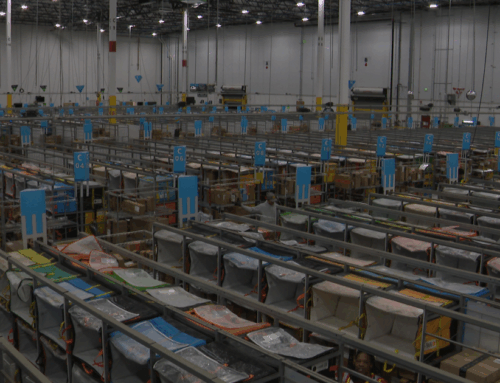Construction Unions Grab Hold of Clean Energy Jobs
May 20, 2025
State and local governments have begun taking concrete steps towards a clean energy economy, and for now, even under Trump, green union jobs are increasing.
Meanwhile, unions have partnered with climate activists to win legislation for more such jobs. Six states have passed “climate jobs” bills to expand renewable energy and raise labor standards for that construction. Four more have union coalitions advocating for such legislation.
Will the green surge continue? And if it does, will workers reap the economic benefits—or get left behind?
The 2022 Inflation Reduction Act opened the door for clean energy projects across the country. Many IRA tax credits were designed to encourage the use of high-wage union labor. But under the Trump administration, most of this IRA funding is either in limbo or has been canceled outright.
Still, more workers are getting experience on jobs that will be central to the potential clean energy economy of the future.
How do workers feel about these jobs? And are they laying the groundwork for more workers to embrace a clean energy transition?
SOLAR PUZZLE
The solar panels we see on rooftops of public buildings and private homes are relatively easy to install, and unions like the International Brotherhood of Electrical Workers have many members with experience in the industry.
IBEW Local 3 has a solar training program based in Long Island, New York, that is required for all apprentices. Chris Schroth, a Local 3 member, says increased solar work provides a hedge against unemployment when there’s a slowdown in construction. These slow periods are happening more frequently: with more people working from home, demand for commercial construction has decreased.
But solar work comes with limitations. The panels can be installed quickly and require very little maintenance, so many workers don’t see them as long-term projects offering stability. And so far, says Schroth, “only a small percentage of our members have worked on solar. So the idea that this kind of work can be an alternative still doesn’t feel real to people.”
Joe Mirkin is an IBEW Local 7 member in Massachusetts, where many members have worked on big solar farms. The jobs are good while they last, and can include a lot of overtime. But Mirkin echoed concerns about their short-term nature. “The work is managed by out-of-town contractors,” he said. “These aren’t long-term careers.”
While more and more IBEW members are working in solar, most solar jobs are still non-union, and they’re often exploitative. Though some non-union solar workers have reached out to the IBEW, according to Mirkin this hasn’t led to new organizing.
Huge strides have been made over the last decade in developing offshore wind. The North Atlantic off New England offers ideal conditions. In Rhode Island, building trades unions supported the development of Block Island Wind, the nation’s largest offshore wind project, and jumped at the chance to use further funding through the IRA.
The Trump administration has blocked all new permits for wind energy development, at least for now. But work on existing projects continues.
Erin Vaughan, a member of IBEW Local 223 in Massachusetts, is currently working to build wind turbines off the coast of Martha’s Vineyard. This is part of the Vineyard Wind 1 project, one of 11 offshore wind farms attached together on federal lands.
BECOME A MONTHLY DONOR
Give $10 a month or more and get our “Fight the Boss, Build the Union” T-shirt.
Generally, Vaughan thinks the working conditions on offshore wind are better than on other projects she’s been part of. But it can be dangerous, as workers deal with huge components in very tight spaces. She had to go through a rigorous six-week training program in four different states.
Vaughan is concerned about the Trump administration’s freeze on offshore wind and other IRA projects. “There’s decades of work out here and I would hate to see it all stopped,” she said.
Compounding this is the shutdown of more nuclear plants. Maintenance of these non-carbon-emitting plants is a big source of employment for IBEW members.
Maintaining existing fossil fuel infrastructure is not enough to substantially increase work, says Vaughan. “If you have the ability to travel for oil refinery maintenance, that’s good, but it doesn’t add many jobs.”
DEEPER ORGANIZING
Of course the clean energy transition we need is not limited to wind and solar. The union officers pushing climate jobs bills are often also advocating for geothermal energy, battery storage, building retrofits, and nuclear power to add to a transition. The United Auto Workers’ recent successes organizing electric vehicle plants are encouraging.
Project Labor Agreements, while great for guaranteeing higher wages on construction work, also contain no-strike clauses and limit workers’ scope of activity on the shop floor. It’s hard for workers to become on-the-job organizers who can take on problems in a context where labor peace with contractors is established from the very start.
ORGANIZING NEEDED
Especially in the current political climate, workers in the building trades need to more aggressively organize non-union clean energy workers. A new clean energy economy is an opportunity for the building trades to bring more of a union culture to these projects and combat longstanding problems like mandatory overtime and speed-up.
The shift to a green economy is also a great opening for unions to do internal education about the benefits to workers of clean energy development. Sometimes this member education can happen in the midst of real-time legislative fights unions are helping to lead.
The Rhode Island AFL-CIO fought for the state’s Act on Climate, which set binding targets for carbon emissions reductions. The act was passed in 2021.
In New York City, the building trades helped pass the Public Solar Bill in September 2024, setting the stage for the installation of 100 megawatts of solar on public buildings by 2030. The Climate and Equitable Jobs Act in Illinois, passed in 2021 with unanimous labor support, contains ambitious climate targets while maintaining a strong commitment to putting unions in the driver’s seat.
These are just a few examples of unions fighting to make a pro-worker clean energy economy real.
At their best, campaigns like these aren’t simply lobbying exercises for leadership, but include political education and member mobilization. They are an opportunity to engage members on the shop floor and educate about the potential benefits of a clean energy transition.
Paul Prescod is a Labor Notes board member.
Search
RECENT PRESS RELEASES
Related Post




